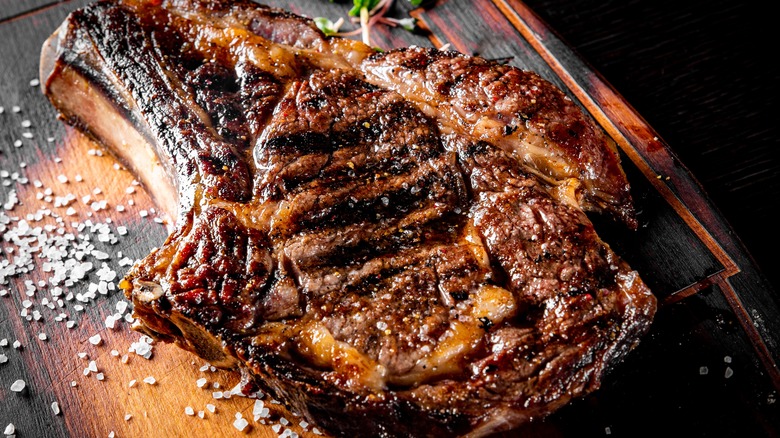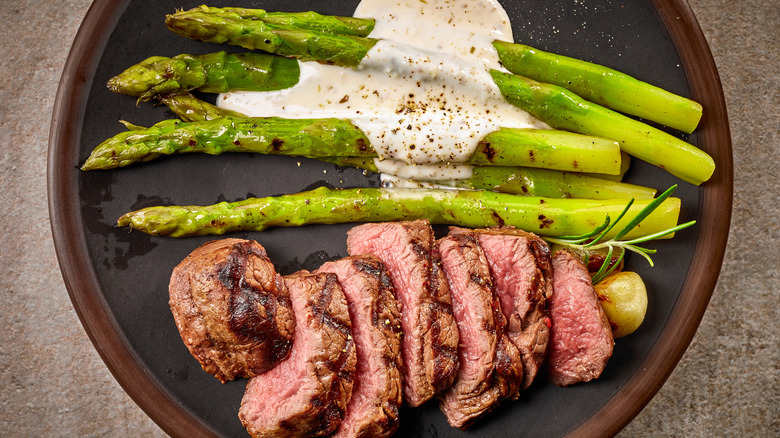A Chef Weighs In On The Best Cut To Order At A Steakhouse
Dining out at a steakhouse may not be in your regular restaurant rotation, so when you do want to treat yourself, it's understandable that you may not know the best steak to order. But a chef definitely does. Food Republic got the inside scoop from Sean Thompson, executive chef at Porter House Bar and Grill in New York City. For him, the ribeye reigns supreme, especially because of a portion of the cut called the spinalis. This part is also known as the cap, rib crown, deckle, or deliciously, butcher's butter. It is a C-shaped edge piece that runs along the outside of the eye — the large middle section of a ribeye steak.
What makes the ribeye spinalis so good? Fat, of course! "Sure, a tenderloin might be the most tender," concedes Thompson, "but the ribeye spinalis is tender yet full of rich marbled flavor." All that intense marbling — the thin streaks of fat interspersed in the muscle itself — melts as the steak cooks, which essentially bastes the meat in flavorful fat from the inside out.
Thompson is also partial to the bone-in variety. In general, searing meat with the bone still in helps prevent the steak from cooking too quickly and losing a lot of moisture. The bone insulates the muscle from the high flame needed to get a good sear, keeping it juicy.
What not to order at a steakhouse, according to a chef
At the end of the day, the best cuts of steak are those that you enjoy most. Whether you prefer an ultra-tender filet mignon or a hunger-crushing porterhouse, you can feel confident that the chefs at any steakhouse worth its salt will do their best to prepare that cut to your liking. However, there are some steakhouse red flags chefs look out for, and to find them, turn to the list of salads and side dishes. Just because the beef is the star of the show does not mean that the vegetable accompaniments should be lackluster.
When asked what he would never order, Sean Thompson explains: "Anything that's out of season, such as asparagus in the winter." Everything being offered on the menu should make sense for the season. Otherwise, you may end up with canned or frozen ingredients trying to stand in for fresh. If you look out the window and see snow falling instead of summer rain, you might want to skip that tomato salad or creamed corn. Instead, go for items that use produce you can easily get all year round, like sauteed mushrooms, creamed spinach, or one of the many styles of mashed potatoes.


